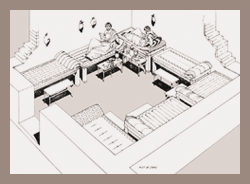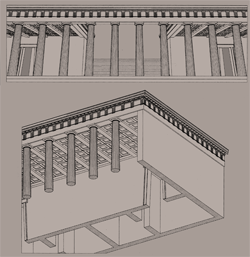download article as .pdf: Edifici pubblici e pasto rituale in Attica Continue Reading
.
 This paper was presented at the International Conference Cibo per gli uomini, cibo per gli dei. Archeologia del pasto rituale, Piazza Armerina, 5-8 of May, 2005. This is now an updated version. The article concerns the issues related to ritual meal in Attica, especially by analyzing the function of several buildings showing an array of cases that has not been properly assessed yet. Each case’s specific features lead to the hypothesis that banquet building rooms’ plan and furniture, as well as the overall number of available seats, point to the existence of different usage methods reflecting coherent social and religious structures. Athens, Eleusis and Brauron are taken into account as examples of a functional system that autonomously organizes its own spaces on the basis of social and institutional needs.
This paper was presented at the International Conference Cibo per gli uomini, cibo per gli dei. Archeologia del pasto rituale, Piazza Armerina, 5-8 of May, 2005. This is now an updated version. The article concerns the issues related to ritual meal in Attica, especially by analyzing the function of several buildings showing an array of cases that has not been properly assessed yet. Each case’s specific features lead to the hypothesis that banquet building rooms’ plan and furniture, as well as the overall number of available seats, point to the existence of different usage methods reflecting coherent social and religious structures. Athens, Eleusis and Brauron are taken into account as examples of a functional system that autonomously organizes its own spaces on the basis of social and institutional needs.

